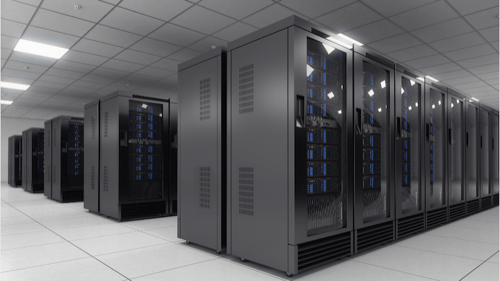
Brad Silverberg (@bradsilverberg) is one of the most accomplished legends of high technology, yet somehow manages to keep a low profile. As a young engineering executive he headed Microsoft’s Windows, Internet and Office franchises. Dubbed “Mr. Windows,” Silverberg led the launch of Windows 95. It’s easy to forget just how groundbreaking Windows 95 was: it crushed Apple and catapulted Microsoft into mainstream consciousness.

Despite that success, Silverberg left in 1999 for an extended sabbatical, never to return after an internal power struggle over the company’s strategic direction. He wanted to bet on the Internet. Another executive wanted to bet on maintaining the company’s focus on its lucrative Windows franchise.
Silverberg lost. But Microsoft lost even more.
Fast forward to today. Silverberg is a venture capitalist with Fuel Capital, and he’s betting big money on a new operating system, Apache Mesos. But this time it’s an OS created to run massive datacenters like the ones Google and Twitter operate. And instead of Microsoft’s proprietary approach, it’s 100% open source, primarily developed by Mesosphere, the company into which his firm just plowed money.
On the cusp of Mesosphere’s latest funding, led by Khosla Ventures, I spoke to Silverberg about his vision of an operating system for the datacenter and the prerequisites for success.
Who Needs A Datacenter OS, Anyway?
ReadWrite: What is driving the need for a datacenter operating system (DCOS) today?
Brad Silverberg: The manifest destiny of cloud computing is a true datacenter operating system. The current model is broken. It simply doesn’t scale efficiently. It’s too complex and costly.
Why? There are several tech trends that are forcing the issue, driven by the explosion of mobile devices accessing the datacenter and the massive migration of apps to the cloud.
First you have these enormous new user bases in the form of people (smartphones primarily) and machines (the Internet of Things, like your refrigerator saying you need milk or a jet engine signaling back its health status). We’re about to pass two billion smartphones on the planet. That number will double again shortly.
Meanwhile more and more machines have IP addresses and are talking to a datacenter somewhere. Applications are becoming big distributed collections of micro-services that run across thousands of servers, and data is just getting bigger all around.
Topping it all off are user expectations of always-on uptime and responsive consumer-style app experiences. You can’t get there from here the way we do things today.
See also: How And Why Google Is Open-Sourcing Its Data Centers
We thought virtualization might offer solutions that scale, but it doesn’t. Not really. It’s just a bridge technology, not a fundamental change in the paradigm.
Think about it from a complexity standpoint. Rather than break a single machine into a bunch of virtual machines that you still have to manage, wouldn’t you rather aggregate all the machines in your datacenter into one big abstracted computer with an operating system?
And guess what? We know this already works.
The concept is proven already in production at massive scale at Google with their Borg/Omega architecture and at Twitter using Apache Mesos as the kernel.
A datacenter OS eliminates all the boundaries of resources. It creates this one massive pool of resources that you can write applications against and scale up or down dynamically in real time as needed to respond in changes in workloads.
It’s taking the notion of a single computer—which is very simple as a programming model—and extending this to thousands, hundreds of thousands or even millions of machines. It eliminates all the underlying complexity that is involved.
Past As Prologue
RW: Microsoft had a smash hit with Windows 95. Are there any comparisons you see between your experiences there and what Mesosphere, a company you invested in, needs to accomplish to be successful with a datacenter operating system?
Silverberg: Although the Mac beat us to market with a graphical user interface, Apple thought too small, in my opinion. Apple had a siloed, proprietary system targeted at a narrow range of customers at too high of a price point. Good design, a GUI approach to computing—we, too, knew that was the way to win.
But it’s more than design. You have to have a business model and technology on your side, too. You need to create a market ecosystem to nurture and grow your platform and make it available to an order of magnitude more people.
Sure, there are advantages to an early, integrated approach in technology but, over time, technology that is adopted by multiple vendors and suppliers tends to dominate market share. iPhones running on iOS is a great business today, but what Google has done with Android is a perfect example of following the Windows 95 playbook.
See also: Here’s An Insider View Of The Next Operating System For The Cloud
It’s critical to the success of an operating system platform that you do everything you can to help partners be successful and their success makes your operating system successful. With Windows 95, we were able to harness an industry of OEMs, independent software vendors, developers, resellers and systems integrators who could create a business on our platform.
Most important, as my colleague Steve Ballmer liked to bellow, is developers, developers, developers. Once you have a developer ecosystem in place, the virtuous cycle takes off and it’s a powerful flywheel effect, creating an incredible amount of value for all the people in that ecosystem.
The other key, with enterprise software, is to be incremental. Enterprises shun “rip and replace” solutions that make everything before them incompatible.
One of the keys to Mesosphere’s current and future success is that you can use it in incremental levels of commitment. You can use it with existing apps off the shelf and get immediate benefits. You don’t have to throw out your current infrastructure. No one wants to throw out their payroll, ERP systems, line of business applications, even if a new way of doing things is better. To me that gives Mesosphere a real compelling advantage.
They’re better than Google that way. With Borg/Omega, you have to write a new application from scratch. You can run your Linux app on Mesosphere right away. If, however, you decide to modify your app and break it into components that integrate better with Mesosphere, you get even more benefit and eventually achieve nirvana in taking advantage of datacenter scale.
So Difficult, Only Open Source Will Do
RW: What do you see as the main hurdles that a DCOS has to overcome?
Silverberg: First of all, the technology is really hard. Open source is probably the only path to success. Mesosphere is building its DCOS around an open-source Apache project, Mesos, and the creator of the project recently joined them from Twitter.
Also, the first customers who will use this are a small subset of the Global 2000 and they’re conservative by nature. They’ll be very careful about doing things at scale so that they don’t risk evaporating their business.
So early progress may be slow. Changing infrastructure paradigms takes time. We have to be patient. The number of customers who really need a DCOS today is more limited than it will be in five years. But this is where cloud computing is going
Lead image courtesy of Shutterstock









